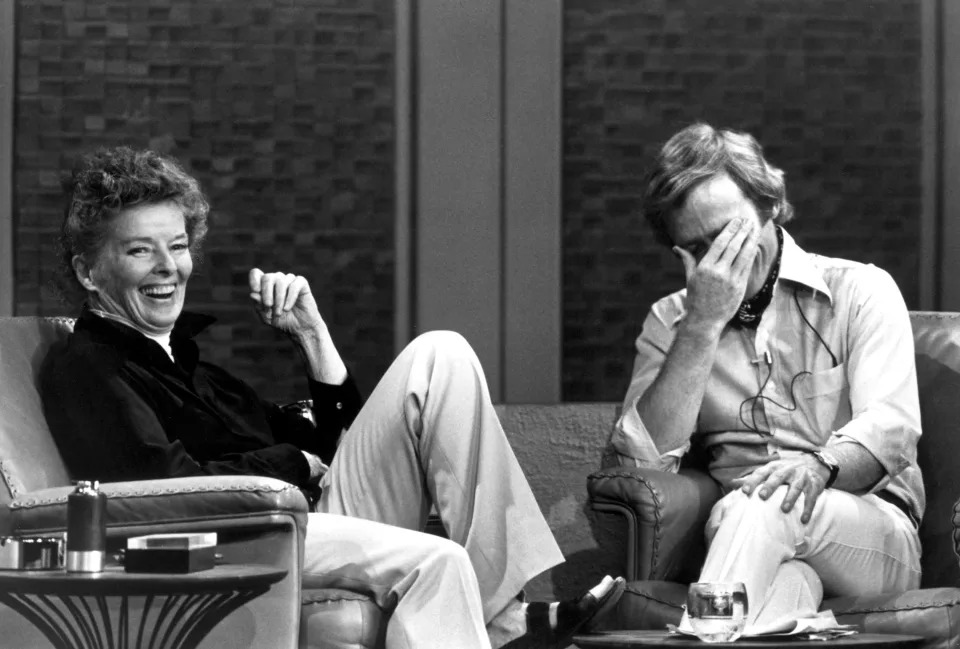Blogger’s Note: I started drafting this post in mid-December while making my list of Festivus grievances. But, as often happens, the narrative did not come together and the partially completed entry was relegated to the “drafts” folder. However, my desire to share the content was energized by two recent events.
Last Sunday’s Washington Post Magazine included an essay by Anna Peele titled, “How do you host television in 2022?” Peele suggests the lack of civility in our every day political and cultural discourse demands a rethinking of the role of talk show hosts. She further claims several TV hosts including Seth Meyers, Ziwe, Padma Lakshmi, Andy Cohen and Keke Palmer have successfully made the transition. Peele focused on how each of these entertainers interacted with their guests.
What Peele failed to address is a more existential question, “When is a talk show not a talk show?”
Look up “The Tonight Show” on Wikipedia.org. It is described as “an American late-night talk show that has aired on NBC since 1954.” The Johnny-Come-Lately imitations, e.g., “The Late Show with David Letterman” and then “…Stephen Colbert” (CBS) or “JimmyKimmell Live” (ABC), are also characterized as “talk shows.”
I guess that depends on your definition of “talk show.” If you had never watched any of the late night programs, you might look forward to a conversation between the host and one or more guests. Last night, the first guest on Colbert appeared at the 31 minute 03 second mark preceded by the opening monologue, commercial break, the regular bit “Meanwhile,” and a second commercial break. The same is true for the rest of the late-night array of “talk shows.” Jimmy Kimmel had a filmed parody of how anti-vaxxers might approach the Heimlich maneuver featuring Arnold Schwarzenegger. And Seth Meyers regularly peppers the first half of his alloted 60 minutes with bits like “You’re Burnt,” “Day Drinking,” or “Back in My Day.”
Monday night’s edition of “Late Night with Seth Meyers” presented that moment of irony which visually captured the topic. Meyer’s studio band is unique in that it features a different guest drummer each week. Before introducing his first guest, Meyers welcomed this week’s percussionist Stevie Nistor, currently on tour with Sparks, who happened to be wearing a tee shirt with a caricature of Dick Cavett.
Some of us are old enough to remember Cavett’s ABC entry into late night television in 1968 following years as a staff writer for Jack Paar and Johnny Carson. He had one more thing in common with his two mentors, a mid-American upbringing, having been born and raised in Gibbon, Nebraska. (NOTE: Paar grew up in Canton, Ohio; Carson in Corning, Iowa.)
But Cavett chose a different path from Carson or his ABC predecessor Joey Bishop. Knowing he could not compete with Carson, the anointed “king of late night TV,” Cavett took his cue from Paar. Although the show bore his name, the focus was always on the guests many with whom he established long-term relationships. They included celebrities from every walk of life including John and Yoko Ono (featured in the film Forrest Gump), Muhammed Ali, Noel Coward, Norman Mailer, then aspiring Massachusetts senator John Kerry, Katherine Hepburn and Groucho Marx. (NOTE: Marx gave Cavett the honor of introducing him at his last public performance, a one-man show An Evening with Groucho Marx at Carnegie Hall on December 16, 1972.)

Cavett would open his show with the obligatory monologue, but it was clear he was as anxious as the audience to get to his guests. Most shows dedicated the entire 90 minutes to one interview. And on rare cases after the show was cut back to one hour, longer conversations with the likes of Hepburn and Marx were broadcast on consecutive nights. Due to the personal relationships with many of his guests outside the confines of the TV cameras, the interviews more resembled a casual exchange between old friends rather than host digging for a sound bite and guest plugging his/her latest project.
In this sense he, rather than Johnny Carson, became the successor to Jack Paar. This was never more evident than occasions when the conversation turned to a mutual experience Cavett shared with a guest. Like Paar, he would introduce the topic, “Remember the time we…” But would stop in mid-sentence, then add, “No, you tell it much better.”
The answer to Anna Peele’s question, “How do you host television in 2022?” is obvious. The same way you did in 1968. The times were not that much different than today. The nation was divided. We were engaged in an unpopular war. Robert Kennedy and Martin Luther King were murdered. Chicago and Miami were the scenes of violent protests. In good times and bad, you do what Dick Cavett did. Focus on who we are, not on what we are doing at the moment.
For what it’s worth.
Dr. ESP
Great entry
Good to hear from you…..regarding today vs in the 50s, 60s and 70s…life does seem so redundant at times as you so well notated. I miss the Cavett contributions.